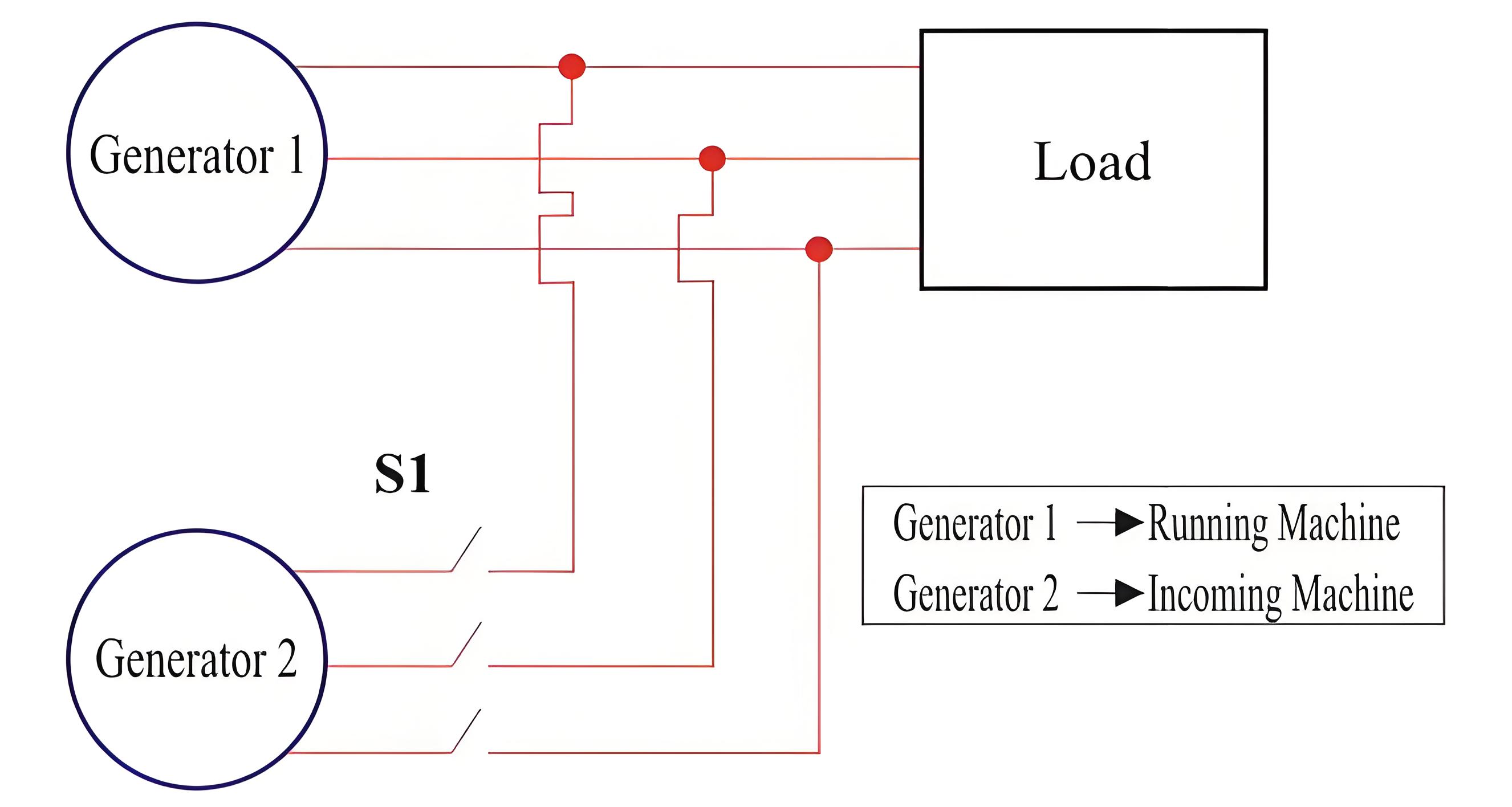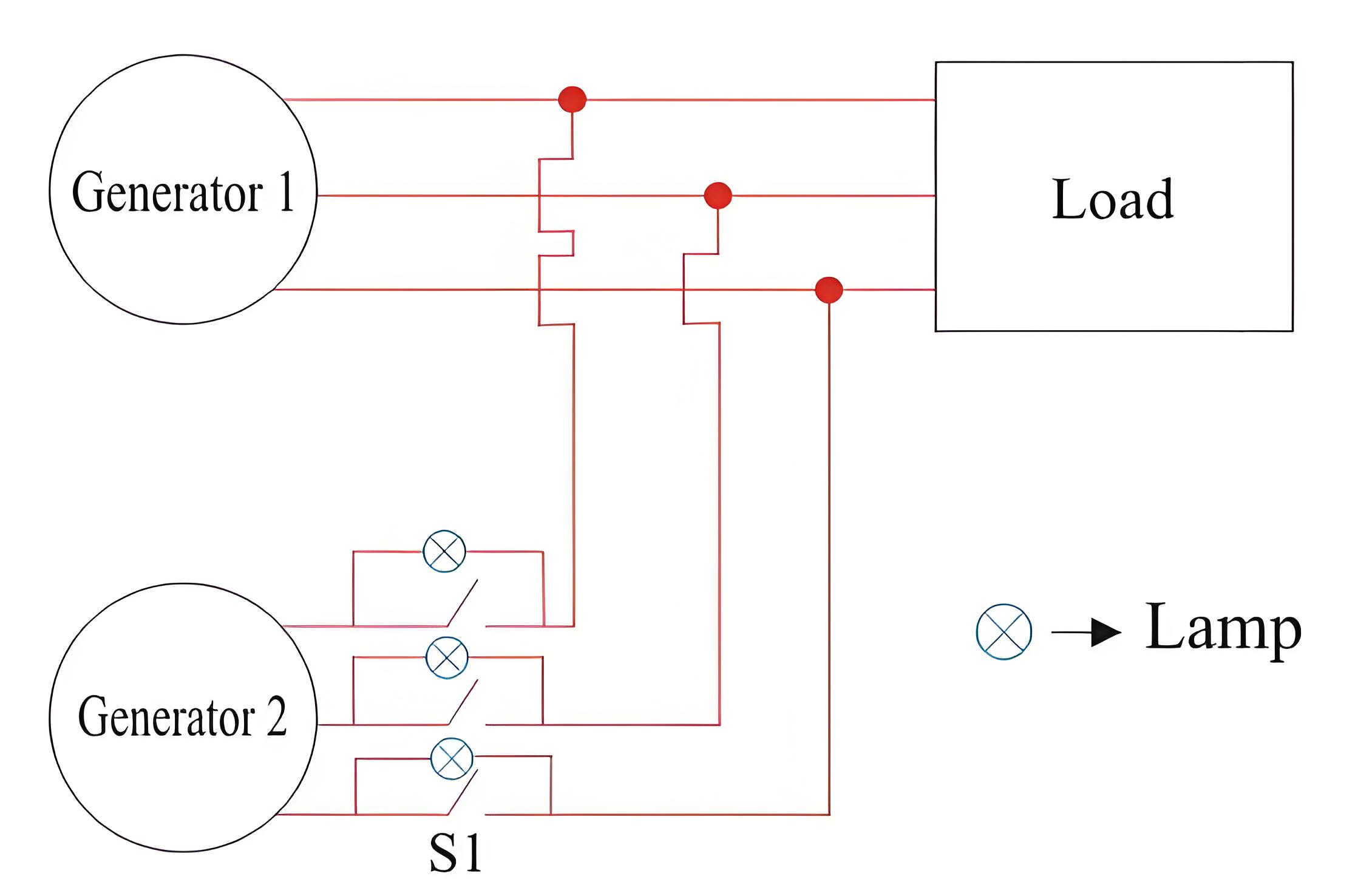Parallel Operation of Alternators
Alternator Definition
An alternator is defined as an AC generator that induces EMF in a stationary wire using a rotating magnetic field, following Faraday’s law of induction.
Conditions for Parallel Operation
The phase sequence of the incoming machine’s voltage must match the bus bar’s voltage.
The RMS line voltage (terminal voltage) of the bus bar or already running machine and the incoming machine should be the same.
The phase angle of the two systems should be equal.
The frequency of the two terminal voltages (incoming machine and the bus bar) should be nearly the same. Large power transients will occur when frequencies are not nearly equal.
Synchronizing Process
Synchronizing involves adjusting terminal voltages and checking phase sequences using a Synchroscope or three-lamp method.
Voltage and Frequency Matching
Ensure terminal voltages and frequencies are nearly identical to avoid power surges and equipment damage.
General Procedure for Paralleling Alternators
The figure below shows an alternator (generator 2) being paralleled with a running power system (generator 1). These two machines are about to synchronize for supplying power to a load. Generator 2 is about to parallel with the help of a switch, S1. This switch should never be closed without satisfying the above conditions.

To equalize terminal voltages, adjust the incoming machine’s terminal voltage by changing its field current. Use voltmeters to match it with the line voltage of the running system.
There are two methods to check the phase sequence of the machines. They are as follows
First one is using a Synchroscope. It is not actually check the phase sequence but it is used to measure the difference in phase angles.
Second method is three lamp method (Figure 2). Here we can see three light bulbs are connected to the terminals of the switch, S1. Bulbs become bright if the phase difference is large. Bulbs become dim if the phase difference is small. The bulbs will show dim and bright all together if phase sequence is the same. The bulbs will get bright in progression if the phase sequence is opposite. This phase sequence can be made equal by swapping the connections on any two phases on one of the generators.

Next, check and verify that the frequencies of the incoming and running systems are nearly the same. This can be done by observing the dimming and brightening of the lamps.
When the frequencies are nearly equal, the two voltages (incoming alternator and running system) will alter the phase gradually. These changes can be observed and the switch, S1 can be made closed when the phase angles are equal.
Advantages of Parallel Operation
When there is maintenance or an inspection, one machine can be taken out from service and the other alternators can keep up for the continuity of supply.
Load supply can be increased.
During light loads, more than one alternator can be shut down while the other will operate in nearly full load.
High efficiency.
The operating cost is reduced.
Ensures the protection of supply and enables cost-effective generation.
The generation cost is reduced.
Breaking down of a generator does not cause any interruption in the supply.
Reliability of the whole power system increases.
The Electricity Encyclopedia is dedicated to accelerating the dissemination and application of electricity knowledge and adding impetus to the development and innovation of the electricity industry.













